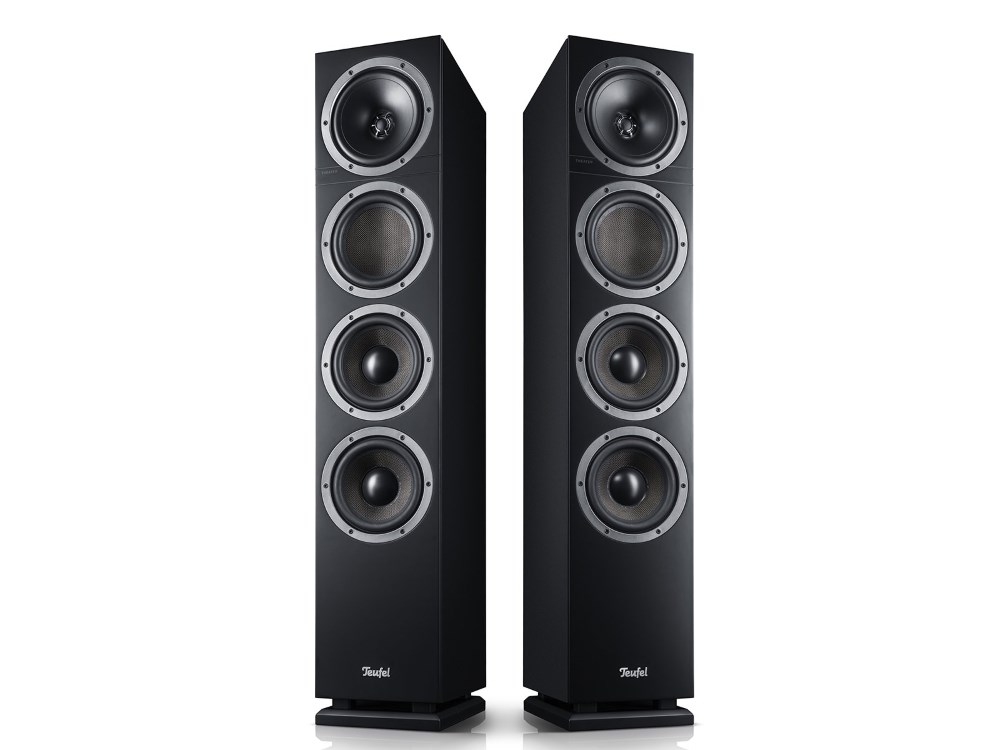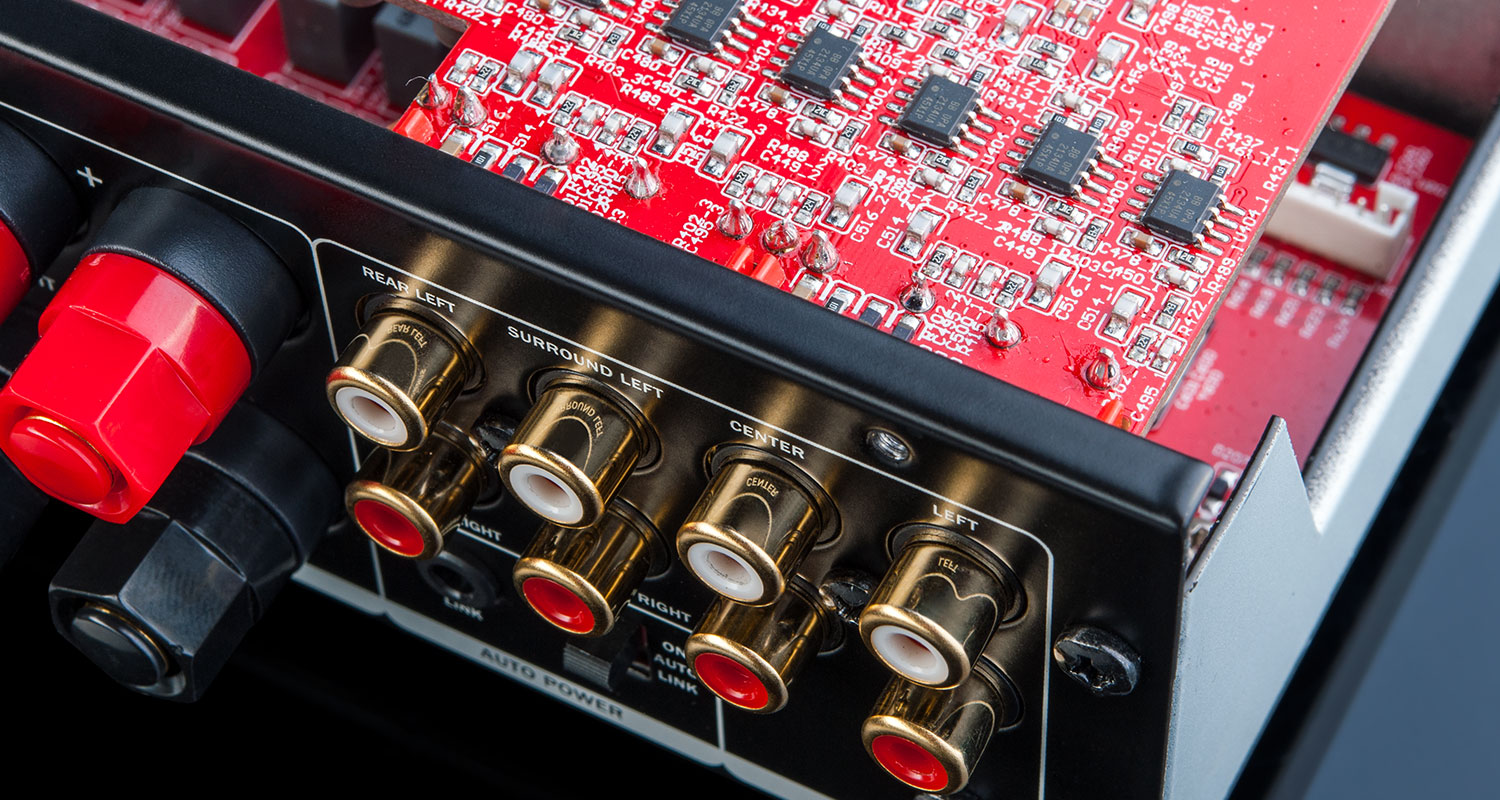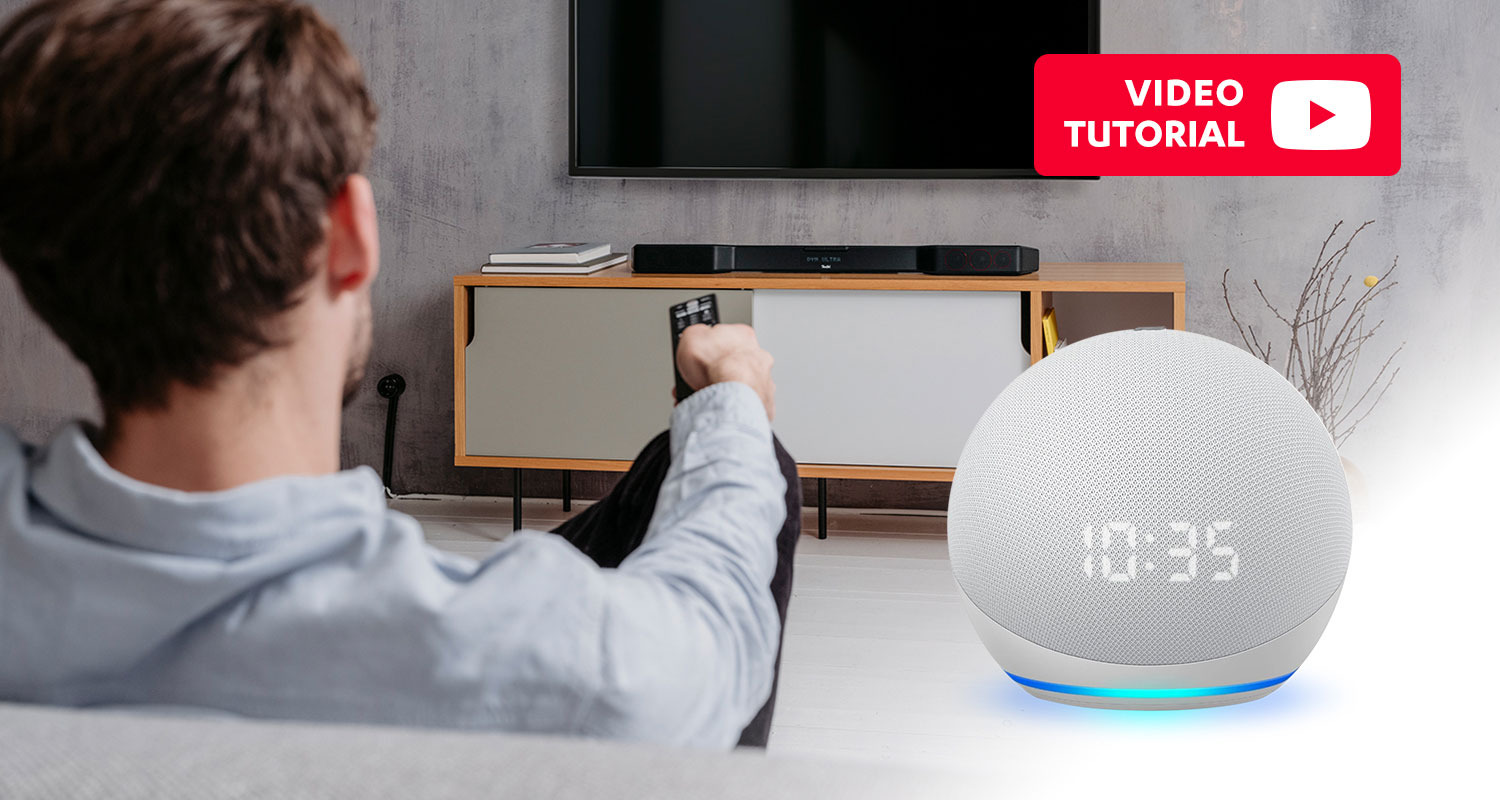Hi-fi purists are always discussing different methods to achieve the best possible hi-fi sound. Whoever turns to the internet for advice on how to create the perfect hi-fi setup might be confronted with some questionable advice. Some tips might sound useful, but actually have little to no effect on the sound quality, such things as bi-wiring and using cable bridges. But don’t worry we know the real tricks on how to improve your hi-fi sound.
Cable Bridges, Bi-Wiring, and Bi-Amping in the Teufel Tutorial
Anyone who takes a closer look at loudspeakers will likely come across the terms bi-wiring and bi-amping. But many music enthusiasts aren’t quite sure what these concepts actually mean. In our Teufel tutorial on YouTube, we aim to clear things up.
Bi-Wiring – to keep things organised
To anyone who understands the basics of bi-wiring will know it’s about separating the individual sequences into different cables. So with bi-wiring it’s about two wires per speaker, with tri-wiring it’s three, and in some rare cases, you can even have four different wires. Now people are probably asking the question, what’s the point of this drama, when actually one cable per speaker is enough.
Distortion-free sound thanks to frequency separation?
The reason behind the idea:
When transmitting the signal from the amplifier to the loudspeaker, all signals must be routed simultaneously through a single cable. Now there are those who see the whole thing purely physically and claim that the thickness of a cable depends only on the length (distance loudspeaker/amplifier) and the impedance of the loudspeaker. Other hi-fi fans, as well as some experts, are of the opinion that the more space you leave to the signal, the more unadulterated it reaches the speaker. One of the reasons for this is the stronger bass frequencies: The basses would cause a stronger current flow and their electromagnetic field would influence the treble and midrange. This effect can be minimized by separating the cable wires of bass and mid and high frequencies. The result would be a more balanced sound.
Tri-Wiring – the increase
With the popular bi-wiring, the bass frequencies, as well as the treble and mid-range frequencies each, have their own cable; with tri-wiring, each frequency range is even routed via its own cable. HiFi fans are still arguing about whether this actually brings an advantage and what exactly this advantage should look like. So if you have the right hi-fi components, you can try out bi-wiring and see for yourself. However, it is important that the hi-fi components are designed for this: The amplifier must have at least two connections per speaker channel. The loudspeaker must also have the appropriate connections, as shown in the picture:

The loudspeaker bridges – do you need a high-end cable bridge?
On the picture, you can see the back of the Ultima 40 Mk2. The small gold-plated metal clamps are the speaker bridges. You can find these on the current model of Ultima 40. They are the standard and are always installed so if you want to do bi-wiring you will have to remove them. If that’s not what you’re not after, leave the cable jumpers in place and they will bridge the signal between the two speakers.
From loudspeaker bridge to jumper cable
But even here there is room for improvement for the HiFi fan. Although, as with bi-wiring, no actually measurable difference can be determined, high-quality cable bridges are still very popular. A cable bridge is basically nothing more than a very short HiFi cable that is used instead of the speaker bridge. These are mostly high-quality cables, usually, gold-plated connectors are used.
Significant sound improvements should be possible
As is so often the case, the opinions of hi-fi disciples differ, but many experts believe that a good cable bridge would make a noticeable difference in sound – there is talk of a significant improvement in the sound, of more brilliant highs and more powerful mids. The market for hi-fi cable bridges proves that these opinions cannot be completely taken out of thin air. These are available in a variety of different designs and price ranges. Cable bridges are available from about 30 Euros up to several hundred Euros. Some representatives even approach the 1,000 Euro mark in terms of price or shoot beyond it – especially with HiFi cables and thus also with cable bridges there are hardly any limits at the top.
Fitting products from Teufel
[product id=”26075,26965,26076″]
Bi-Amping – a separate amplifier only for the bass?
Another approach, which also involves dividing the frequencies, is bi-amping. As you can tell by the name, this is about the use of two amplifiers within a hi-fi system. This does not mean the separate use of pre-amplifier and power amplifier, but each frequency range is actually assigned its own amplifier – this is called horizontal bi-amping.
Horizontal Bi-amping
In practice, this means that you need two stereo power amplifiers and a way to split the different frequencies before the power amp. For this, you need a preamplifier or a special crossover, a so-called active crossover. A conventional crossover, as it is built into the speaker cabinet, does not work. An active crossover usually has various setting options and can divide the frequencies into up to four different channels.
But only very few people go that far, at least in their living room. However, this procedure is common practice for a large PA system. HiFi purists, however, are more likely to encounter the horizontal bi-amping with pre-amplifier or active crossover described above. Compared to bi-wiring, this method is not very common, which is undoubtedly due to the much higher costs.
Vertical bi-amping
Another method for bi-amping is vertical bi-amping. Here not every frequency range gets its own amplifier, but every loudspeaker. In the following video, this is explained in more detail. Experts rather recommend vertical bi-amping. Here you can read more about bi-amping.
More speakers to experiment with at Teufel

- ▶ Theater 500: The impressive Theater 500 floor-standing loudspeakers are also a good sound basis for your living room – even with conventional cabling. Test for yourself whether you can further improve the extremely low bass or the detailed spatiality with alternative wiring.
▶ Theater 500S: You like it a little more portable? The Theater 500S are small and unobtrusive with 2-way technology for powerful sound. More interesting products from Teufel
[product id=”36824,41873,31012″]
Conclusion: All a question of faith
Although there are no measurable differences in sound quality with bi-wiring and the use of high-quality cable bridges, many experts believe that this can improve the sound. This phenomenon suggests that music and sound perception cannot always be explained scientifically. Perhaps, for once, you should not trust science, but your own ears. After all, scientists had already claimed that the human ear cannot distinguish an MP3 file shrunk to ten per cent of its original size from the original – hi-fi experts can only laugh about this.
It would, therefore, be almost negligent to assume that such measures would not be of any use in principle. Whether it really is a great improvement is a matter of debate. Therefore, the opinion of opponents of noble cable bridges and bi-wiring is understandable. After all, such equipment costs a lot of money, especially bi-amping is an expensive matter. So once again you have to decide for yourself if you want to invest in small but fine sound improvement.





2 responses to “Cable Bridges, Bi-wiring and Bi-amping: clearly explained”
I understand bi-wiring in concept and have done so in my own system, using some very high quality Masterbuilt speaker cables. Upon exiting the amplifier these cables have two separate groupings of pos & neg wires that run to corresponding sets of binding posts on the speakers.
I’ve not had a good explanation of how can the one set of wires at the speaker be receiving only low frequency signals from the amp? The same goes for mid & high frequencies coming from the amp and going to the other binding posts.
As I see it, there is only one set of connections at the amp meaning all wires would pick up a full frequency signal(?). I’m sure I’m missing something. Please elaborate.
Thanks,
Tom
Hi Tom,
That’s a good question, and one that leads to a lot of confusion. Bi-wiring can refer to two slightly different processes depending on your equipment. In your case, if there is only one set of terminals per speaker channel, you are exactly right. The two sets of cables are delivering the same signal, just doubled, which increases the power output.
Some receivers and amplifiers have multiple sets of terminals (usually two, sometimes three) per speaker channel. This allows the signal to be split and transmitted via a dedicated set of cables. Strictly speaking, this is bi-amping (a type of bi-wiring) because there will be a dedicated amp for each signal segment.
Hope that helps you make better sense of the situation.